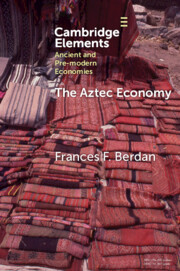Element contents
The Aztec Economy
Published online by Cambridge University Press: 25 April 2023
Summary
- Type
- Element
- Information
- Online ISBN: 9781009368124Publisher: Cambridge University PressPrint publication: 18 May 2023
References
- 4
- Cited by



